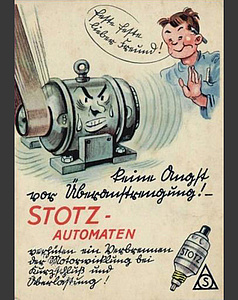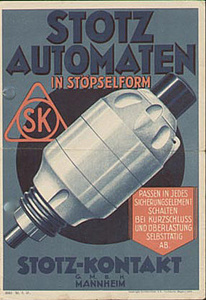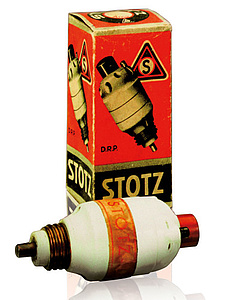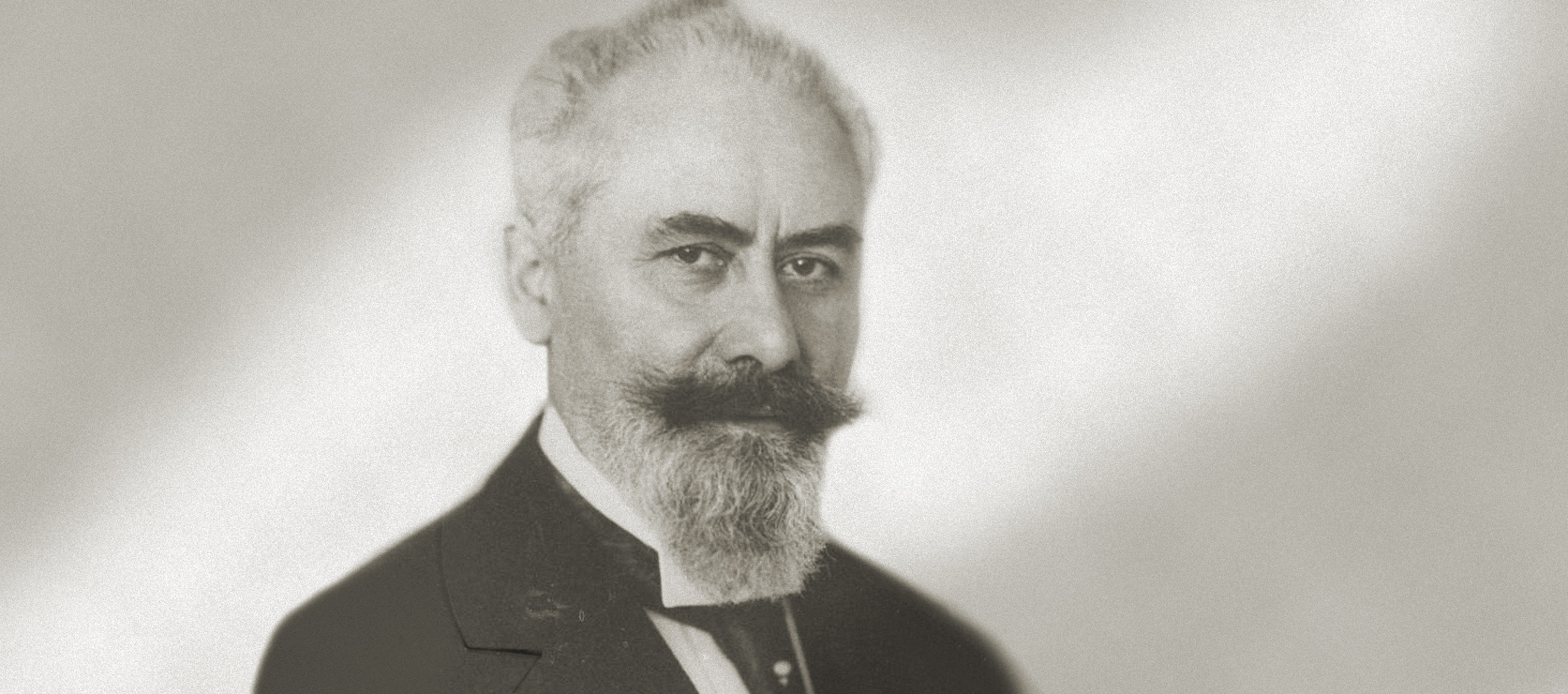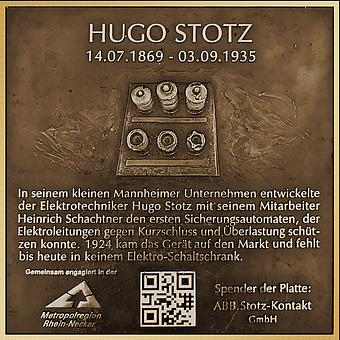1924 Circuit breaker
Hugo Stotz (14.07.1869 - 03.11.1935)
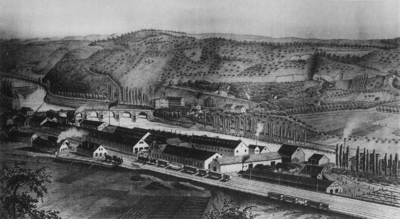
Hugo Stotz was born in Stuttgart on July 14, 1869. He completes an apprenticeship as an electrical engineer at Maschinenfabrik Esslingen. At this company, which is as rich in tradition as it is in progress, he becomes acquainted with a system for demonstrating electric lighting. Thomas Alva Edison had presented this new technology at an international electricity congress in Paris in 1881. In 1887, Stotz, who was only 18 years old, was commissioned by his company to build a so-called "block plant" in Venice, which was to supply an entire block of houses with electricity using a small power plant.
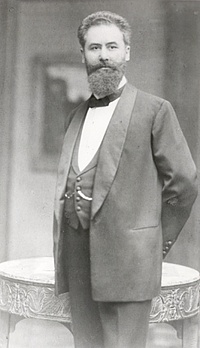
In 1889, his father Emil Stotz died, and Hugo moved to Mannheim with his mother Auguste in 1891. There he founded the company "Moyé und Stotz, Gürtlerei und Posamente, Vertretung der Maschinenfabrik Esslingen" in Quadrat P 6, 20 together with a partner. The young company converts gas and kerosene lamps for electric operation and builds block stations to supply electricity to individual houses and commercial enterprises, since there is still no electricity plant in Mannheim. Stotz used steam locomobiles from Heinrich Lanz to drive the dynamos.
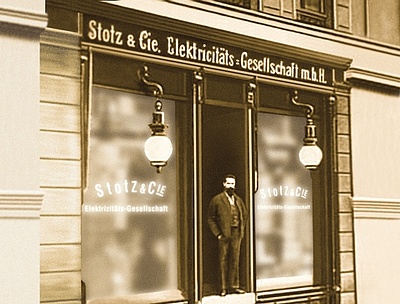
After the departure of his partner Moyé in 1896, Hugo Stotz renamed his company "Stotz & Cie. Elektrizitätsgesellschaft m.b.H.". He is a designer, manufacturer and installer of electrical appliances all in one. Thanks to the advancing electrification of households and businesses, business is so successful that in 1901 Stotz moves his company into his own residential and commercial building at O 4, 8-9, where he not only sets up a store, but also a blacksmith's store, a mechanical workshop and a laboratory.
Stotz draws attention to his new business premises with a neon sign by installing the letters S T O T Z in on the roof of the building. The circuit he designed causes the letters to light up one after the other, until the entire name shines and then goes out again. This ticker is the first neon sign in Germany.
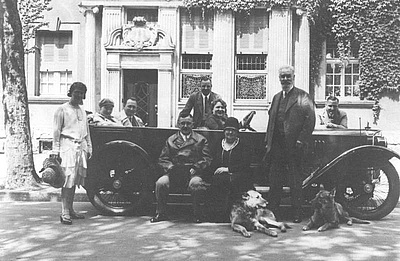
In 1903 he marries Franziska Held, the sister of the Mannheim racing driver Fritz Held, a friend of Carl Benz.
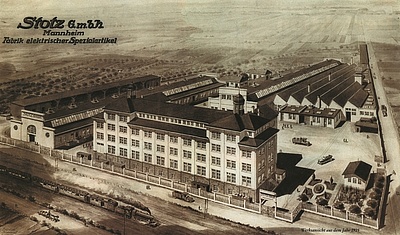
Stotz develops its own technical equipment and manufactures installation materials, such as switches and sockets. His company grows rapidly, especially through the installation of lighting systems. The company opens more and more branches and eventually employs 300 fitters. Stotz electrifies entire villages. The Mannheim office building soon becomes too small. In addition, Stotz wants to concentrate again on the development of electrical appliances. Therefore, he sold the installation department to BBC in 1912. Stotz built a large factory in Mannheim Neckarau for the production of his electrical appliances. The company was now called "Stotz & Cie., Fabrik elektrischer Spezialartikel.
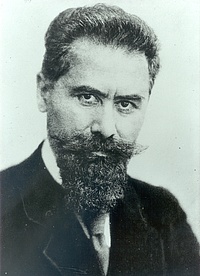
The new plant has barely started operations when the First World War begins and brings the company into ever greater economic difficulties. After the end of the war, Stotz sees no other option than to sell his company to BBC. However, he remains managing director until 1929, and the company name is also retained, but as a subsidiary of BBC.
In the period after World War I, more and more electrical appliances such as irons, vacuum cleaners, refrigerators, bread toasters, coffee makers, pressure stoves, immersion heaters and hot plates enter households.
As a result, overloads and short circuits are becoming more common in homes, often even leading to fires . The fuses installed to protect the wiring are proving to be impractical and even prone to accidents. When the current is too high, a thin wire melts in the fuses, interrupting the current. To then allow the current to flow again, the fuse must be replaced. But if there is none to hand, it is tempting to patch the fuse with a wire, which is of course a fire hazard in the true sense of the word.
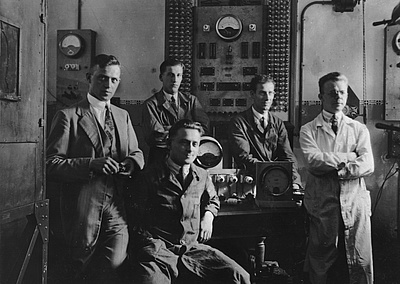
For Hugo Stotz, this is an intolerable state of affairs. Together with his chief designer Heinrich Schachtner, he begins to tinker with a permanent fuse that protects the circuit without being destroyed. Stotz is on friendly terms with Heinrich Schachtner, who joined the company as an apprentice in 1904. Together , the two often sit for hours over plans and drawings.
Hugo Stotz believed strongly in teamwork, which contributed greatly to the success of his inventions. His employees appreciate the fact that they can talk to him like a colleague and that he treats them with respect. So Stotz knocks before he enters the development department.
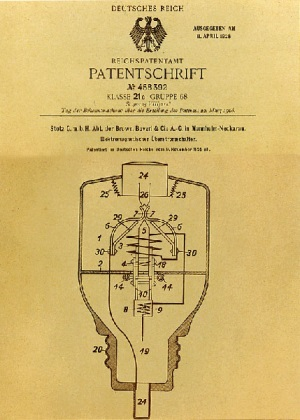
Stotz and Schachtner replace the thin wire of the fuse with a combination of solenoid coil and thermo-bimetal. This ingenious idea combines two tripping systems into one. The current flows through the coil and generates a magnetic field. If the current is too high, such as in the case of a short circuit, the high magnetic field triggers a switch that automatically shuts off the circuit immediately. In the event of a prolonged overload caused by too many connected devices, the bimetal strip bends as a result of the heating and interrupts the current. Once the fault has been rectified, a push of a button is all that is required and the current flows again. The installation of a new fuse is no longer necessary. The automatic circuit breaker thus protects against short circuits and overloads at the same time.
On November 9, 1924, the electromagnetic overcurrent switch was granted an imperial patent.
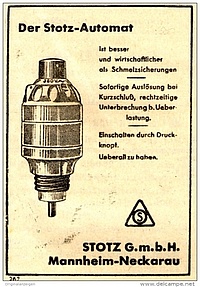
Hugo Stotz, who always attaches great importance to the practical applicability of his devices, provides the automatic circuit breaker with a screw socket that fits exactly into the socket already provided for fuses. This helps the automatic circuit breaker to achieve a fast breakthrough. It is significant that even today, "Stotz circuit breakers" screwed into the old sockets are still in service in many households.
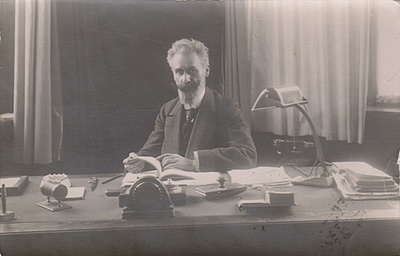
Hugo Stotz retires in 1929, but continues to contribute his knowledge and experience to the company on technical issues or new developments. The company "Stotz-Kontakt GmbH" emerges from the merger with the Frankfurt company "Kontakt AG" in 1930.
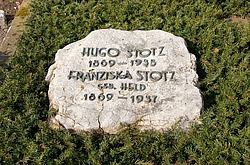
Hugo Stotz died on September 3, 1935. He finds his final resting place in Mannheim's main cemetery.
The Stotz automatic circuit breaker is still the synonym for electrical fuses today, and it is not missing in any household. The Stotz-Kontakt company is still the world market leader for automatic circuit breakers. Since 1924, more than a billion "Stotz-Automats" have gone from the Kurpfalz region to the whole world, protecting people from accidents and fires.
